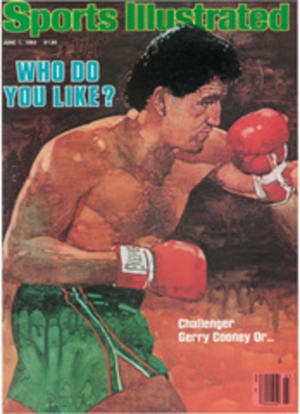
IF BASEBALL'S HEAD WERE ON STRAIGHT IT WOULD USE THE DESIGNATED SHRINK
Change in baseball is usually as slow-moving as a 250-pound umpire, but there are those in the game who believe that now is the time for the designated shrink, a psychologist who works closely with the players. Former San Francisco Manager Dave Bristol, now a Phillies coach, is one such proponent. "Look at all the sophisticated equipment a trainer uses to condition players' bodies," he says. "Sure, arms and legs are important. But so are players' heads."
Bristol's enthusiasm for sports psychologists is a direct result of personal experience. "When I was managing the Giants in 1980," he says, "we did great in spring training, but fell apart early in the season. I was so depressed I wondered if I'd be able to finish out the season. But I had a couple of sessions with Dr. Tom McGinnis, a sports psychologist, and got some things off my chest I wouldn't have told anyone else. He renewed my confidence, and in August we moved to within five games of first place. We fell back in September, but if Tom had worked with the whole team, the season might have had a different ending."
One might expect that McGinnis, a past president of the American Association for Marriage and Family Therapy, would be more at home in a consultation room than a dugout. But he earned varsity letters in baseball, basketball, tennis and track at Catawba College in North Carolina and empathizes as much with troubled athletes as with troubled families. His introduction to baseball psychotherapy came when former Catawba teammate and longtime major league coach Vern Benson, then managing the Triple A Syracuse Chiefs, invited him to work with high-potential players hampered by hang-ups.
Mike Stanton, now a relief pitcher with the Seattle Mariners, was one who worked with McGinnis. "Pitching is 95 percent mental," says Stanton. "The less uptight you are, the more fluid your motion. I've always been able to throw real hard, but I never had a lot of control. In four sessions, Tom taught me relaxation and self-hypnosis—how to ignore a stadium full of screaming, hostile fans by focusing all my aggression on that hitter at the plate. It was amazing how that calmed me down and made me throw with more control."
At the plate, Gary Woods struggled with an equally nettlesome problem. "I was too defensive at the plate," says Woods, now a Chicago Cubs outfielder. "If a pitcher got two strikes on me, the third one was a foregone conclusion. I would overconcentrate to the point of not being able to get the wood off my shoulder. Tom spent two or three hours teaching me relaxation techniques. I became more aggressive, and my average improved. Whether it was Tom or just experience, I don't know, but the bottom line is I made it into the majors."
San Francisco Shortstop Johnnie LeMaster was already a big-leaguer when he and McGinnis had a two-hour session in the San Francisco bullpen. "The way the fans were on my case," says LeMaster, "I'd taken to stuffing my ears with cotton on the field. And I was pressing—worrying about striking out, because then I'd have to take that long walk back to the dugout with boos all the way. McGinnis works on positive thinking, getting rid of that negative stuff that gets into you when you've had a bad day or a worse week. I don't know to what degree Tom helped me in that short time, but I don't have the problem anymore."
Sports psychology is no newcomer to baseball. Two former Houston Astro executives remember that in 1972 their club put a psychologist on retainer for the season. Recalls Pat Gillick, then a Houston director of scouting and now a Toronto vice-president, "Players didn't make much use of the guy. They tended to be suspicious that the psychologist was working for management, trying to get inside their brains. And the manager thought the front office was making inroads into his area of responsibility."
Adds Tal Smith, then the Astros' vice-president and director of player personnel and now a consultant to major league teams, "Houston top management never really got behind the program. Without its support, the program never had a chance. But I was and still am a proponent of using a psychologist, because there are so many situations where professional counseling could be of value to both players and their teams. Anyone who plays professional baseball has dominated at the amateur level. He's never had a problem striking out in key situations or getting hitters out. Suddenly there's a level of competition that creates a very stressful situation, and some very fine prospects are unable to cope with this. There are problems with player-manager relations and with the sensitive egos of performers, and with some major league fathers who can be even worse than Little League fathers. And what about the three top draft choice catchers who developed psychological blocks about returning the ball to the pitcher?"
Not surprisingly. McGinnis, who has occasionally served as designated shrink for players on the Blue Jays, Braves, Cardinals, Reds, Giants and Yankees, believes that baseball teams need staff psychologists to treat stressed psyches every bit as much as they need trainers to treat stress fractures. "Managers have told me," he says, "that, at best, the athlete can be expected to hone his physical skills only another six to eight percent once he has made it to the majors. With the mind—where confidence, drive and enthusiasm are generated—the possibilities are unlimited, yet that's an area that's usually ignored.
"Major league players aren't pitching, hitting and fielding machines. Fans have little comprehension of the stresses their heroes and goats labor under. I've had managers tell me that a player is homesick, hard to manage, immature, anxious, has marital problems, shows homosexual tendencies, is a hypochondriac or a compulsive drinker or has threatened to kill the third-base coach. Authoritarian managers can be part of the problem, along with player rivalries, the endless nothing-to-do-on-the-road traveling and, worst of all, the daily pressure to win."
Baseball fields are, in fact, diamond-shaped pressure cookers. Says Stanton, "You play 162 games. There are quick tips and really hard downs. And the next day, everybody in the country knows what you did or didn't do. There are only 640 of us, and there's always someone bigger and faster coming up behind you. After the season, it takes me a good month to relax."
How soon the designated shrink comes to the rescue depends on player and management acceptance. "Baseball has been remiss in not utilizing sports psychologists," says Smith. "But it'll have to be done on a voluntary basis. You can't force athletes to open up their lives for examination by someone unless they're completely comfortable with him." Adds Gillick, "If a player is willing to accept help, our organization will recommend someone for him to see. We sent one of our best young prospects to McGinnis just before the season started. If I were sure players would accept the service, we'd probably move faster."
Woods and LeMaster have no such doubts, 'it's true that players who are doing well to begin with probably wouldn't want anything to do with a psychologist," says LeMaster. "But the player who's struggling would probably jump at the opportunity. You'd have to have a capable man who knows athletes and how they think, maybe who's been one himself—not some witch doctor who puts guys under a spell."
Stanton thinks acceptance would be about what it is for baseball's Sunday Bible studies. "Half would go and half wouldn't," he says. "The player who's going one for 24, who's tried everything from switching shoes and batting gloves to having a guy on a hitting streak kiss his bat, will be the first one on line to see the designated shrink. In baseball, survival is definitely of the fittest. Anybody who works at it can have a great body. Getting your head in shape is the tough part."
Bristol is optimistic about the future of the DS. "Somebody has to jump out in front," he says. "The other clubs will follow." For the team that dares to be first, McGinnis has worked with son Tom Jr., also a psychologist, to design a complete psychological-services plan—from counseling players and providing orientations for coaches and managers during winter ball and spring training to on-call sessions during the season. "Baseball would be more exciting if more players lived up to their potential, played with the cockiness of a Pete Rose or the unflappable calm of a Tom Seaver," says the elder McGinnis. "And there'd be a lot less human waste. Players would be better adjusted, extend their careers, play better ball for the fans and make more money for management. Everybody would benefit."
Along the way, baseball could get a whole new set of heroes—guys who never swing a bat or throw a ball. Says Dave Bristol, "What the sports psychologist does is turn up a light that's been dim so it comes on bright again. And the team that's got the players with the brightest lights is going to win."

